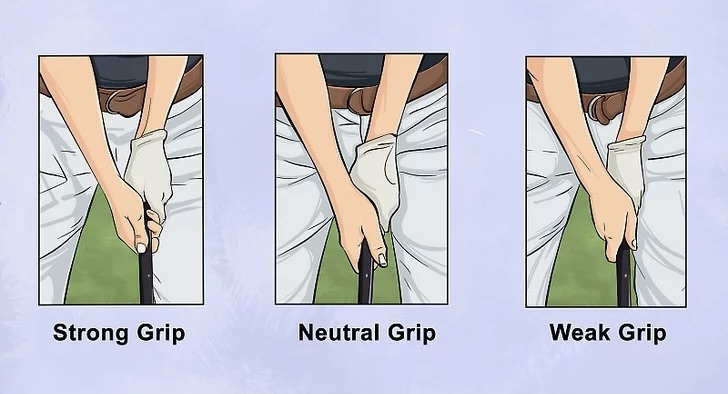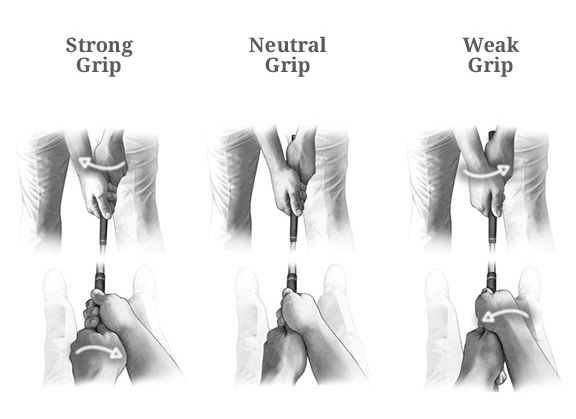
Achieving Better Shaft Lean for Improved Ball Striking
Master Your Grip | Achieving Better Shaft Lean for Improved Ball Striking (7 of 30)
Your grip is one of the most fundamental aspects of your golf swing, and it plays a significant role in achieving proper shaft lean. A correct grip ensures better control, consistency, and power in your swing. In this blog post, we'll explore how your grip influences shaft lean and provide tips for achieving the perfect grip to enhance your ball striking.

Hi friends and golfers! Welcome back for another chapter on Shaft Lean. The role of grip in shaft lean is huge and this is where we talk about matchups. As a professional golf coach at EJS Golf Academy in Scottsdale, AZ, I emphasize the importance of understanding the fundamentals of a golfer's grip and its impact on shaft lean. The grip is a critical component of the golf swing, influencing wrist angles and, consequently, the shaft lean at impact. This blog will delve into how different grip types—strong, weak, and neutral—affect shaft lean and wrist angles, helping golfers achieve better control and consistency in their game. The grip is the golfer's only connection to the club, making it a fundamental aspect of the swing. A proper grip ensures that the club face is square at impact, leading to straighter and more accurate shots. However, the type of grip—strong, weak, or neutral—can significantly influence the shaft lean and wrist angles during the swing.
Understanding Grip Basics:
There are several types of grips commonly used in golf, including the overlap, interlock, and baseball grips. Each grip type affects your shaft lean differently. The overlap grip, where the little finger of the trailing hand overlaps the index finger of the lead hand, is commonly used by professional golfers. The interlock grip, where the little finger of the trailing hand interlocks with the index finger of the lead hand, is popular among golfers with smaller hands. The baseball grip, where all ten fingers are on the club, is less common but can be effective for beginners. Understanding the basics of each grip type is essential for finding the one that works best for you.

Common Grip Mistakes:
Improper grip can lead to a variety of swing issues, including poor shaft lean. Common grip mistakes include holding the club too tightly, positioning the hands incorrectly, and using a grip that is too strong or too weak. Holding the club too tightly can restrict your wrist movement, leading to a loss of power and control. Positioning the hands incorrectly can cause the clubface to be open or closed at impact, resulting in inconsistent ball striking. Using a grip that is too strong or too weak can affect your ability to achieve proper shaft lean and control the ball flight.
Adjusting Grip Pressure:
Grip pressure is a critical factor in achieving proper shaft lean. Gripping the club too tightly can lead to tension in your wrists and forearms, restricting your ability to achieve the correct positions. Conversely, gripping the club too loosely can result in a loss of control. Finding the right balance is key. A good rule of thumb is to hold the club with enough pressure to control it, but not so tight that it causes tension. Practice swinging with different grip pressures to find what works best for you. Tiger Woods holds his grip around a 10 and golfers of the past said they tried to grip it like holding a bird. Key is, don't let yourself get tense through your shoulders.
Grip Size and Material:
The size and material of your grip can significantly impact your swing mechanics and shaft lean. A grip that is too thick or too thin can lead to improper wrist positions and affect your swing path. Ensure your grip size matches your hand size and swing style. The material of the grip also plays a role in comfort and control. Rubber grips offer a soft feel and good traction, while corded grips provide more texture and are suitable for wet conditions. Regularly replacing worn grips can help maintain consistent performance. I like small grips b/c i feel like I have more feel. That is only a personal preference.
Strong Grip and Shaft Lean
A strong grip is characterized by the hands being rotated more to the right (for right-handed golfers) on the club. This grip tends to close the club face, promoting a draw or even a hook if not managed correctly. With a strong grip, golfers often experience more forward shaft lean at impact. This is because the hands are ahead of the ball, and the wrists are in a more bowed position. The increased shaft lean can lead to a lower ball flight and more penetrating shots, which can be advantageous in windy conditions. To achieve proper shaft lean with a strong grip, golfers need to focus on maintaining a balanced wrist position throughout the swing. This involves ensuring that the wrists do not become overly bowed, which can excessively de-loft the club face. Practicing with a focus on wrist control can help golfers with a strong grip achieve the desired forward shaft lean without compromising their ball flight. If a golfer with a strong grip doesn't get shaft lean, the ball will most likely take off left.

Weak Grip and Shaft Lean
Conversely, a weak grip is when the hands are rotated more to the left on the club. This grip tends to open the club face, promoting a fade or slice. With a weak grip, golfers often have less forward shaft lean at impact. The hands are more behind the ball, and the wrists are in a more cupped position. This can lead to a higher ball flight and more spin, which can be beneficial for stopping the ball quickly on the greens. To achieve proper shaft lean with a weak grip, golfers need to focus on ensuring their wrists do not become overly cupped at impact. Think of wrist extension in your trail wrist. This involves practicing a more neutral wrist position to prevent adding too much loft to the club face. By managing wrist angles effectively, golfers with a weak grip can achieve the necessary forward shaft lean to maintain control and distance.
Neutral Grip and Shaft Lean
A neutral grip is when the hands are positioned in a way that the V's formed by the thumb and forefinger point towards the right shoulder (for right-handed golfers). This grip promotes a square clubface at impact, leading to straighter shots. With a neutral grip, golfers typically achieve a balanced shaft lean, with the hands slightly ahead of the ball at impact. This position allows for optimal loft and control, resulting in a consistent ball flight and distance. To maintain proper shaft lean with a neutral grip, golfers should focus on keeping their wrists in a neutral position throughout the swing. This grip naturally promotes a square clubface, making it easier to achieve the desired forward shaft lean. Regular practice with a focus on wrist stability can help golfers with a neutral grip maintain consistent and effective shaft lean.
Conclusion
Your grip is a critical component of achieving proper shaft lean and improving your ball striking. By understanding the basics of different grip types, avoiding common grip mistakes, adjusting grip pressure, and selecting the right grip size and material, you can enhance your swing mechanics and overall performance. Regular practice and professional guidance can help you master your grip and achieve better consistency and control on the course. Consider booking a lesson with a golf instructor to get personalized feedback and further improve your grip and shaft lean.
Understanding the relationship between grip type and shaft lean is crucial for golfers aiming to improve their game. At EJS Golf Academy, I focus on helping golfers find the grip that best suits their swing and playing style. Whether you have a strong, weak, or neutral grip, managing your wrist angles and shaft lean can lead to more consistent and powerful shots. For personalized golf lessons and more insights, visit EJSGolf.com and explore our Scottsdale Golf Lessons and Online Golf Lessons. Let's work together to enhance your game from the very first lesson.
